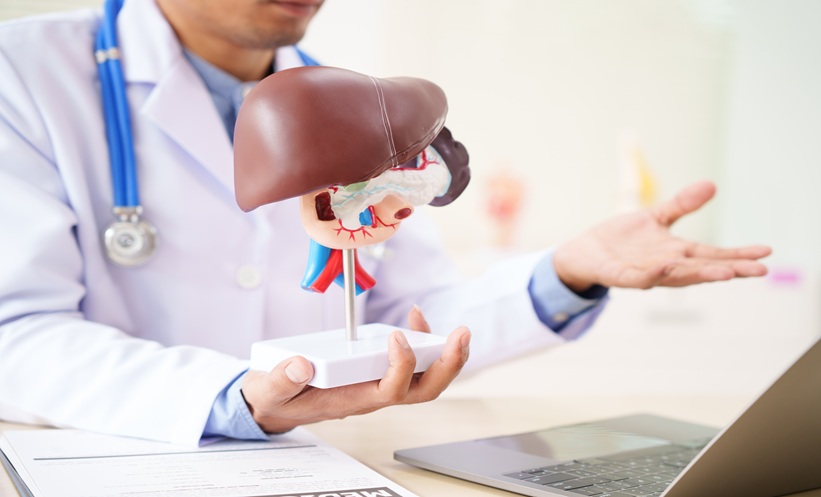Prof Ashwani Singal | Associate Professor of Medicine, University of South Dakota Sanford School of Medicine, Vermillion, South Dakota, USA, and Transplant Hepatologist and Chief of Clinical Research Affairs, Avera University Hospital and Transplant Institute, Sioux Falls, South Dakota, USA
![]()
Your various specialities include alcoholic and nonalcoholic liver diseases, acute kidney injury in cirrhosis, and simultaneous liver–kidney transplantation. What ignited your interest in hepatology and motivated you to acuire skills in these areas?
An algorithmic approach, evidence-based decisions, and the cognitive aspects of hepatology attracted me to establish a career in this discipline. Further, the ability to change the lives of people with liver disease using liver transplantation stimulated me further to obtain specialty training in transplant hepatology from the Mayo Clinic in Minnesota, USA. To be specific, the lack of specific therapies, magnitude of disease burden, yet the ability to prevent progression to the advanced spectrum with control of risk factors developed my interest in alcohol and nonalcohol-related fatty liver diseases. Prevalence of renal dysfunction in cirrhosis and an unmet clinical need for biomarkers and models for allocation of simultaneous liver–kidney transplantation provide opportunities to contribute to this rapidly evolving field of acute kidney injury in patients with cirrhosis.
Regarding your specific interest in hepatic porphyria, could you tell us more about this group of disorders and why you believe they merit wider attention?
Porphyria is a group of metabolic disorders with eight different porphyrias, each due to a specific enzymatic defect in the haem synthesis pathway, with characteristic biochemical and clinical phenotypes. Understanding the pathophysiological basis provides the basis for specific treatment of each individual porphyria. The rarity of the condition and lack of awareness result in delay in diagnosis, rationalising the need for wider attention to these disorders by healthcare providers.
Could you enlighten us on the overall mission of the Avera Transplant Institute of which you are the Chief of Clinical Research Affairs?
Compassion, hospitality, and stewardship are three pillars of providing excellent patient care at Avera and make a difference in the lives of people. Avera is known for its excellent patient care through experienced nurses, advanced practice providers, physician hospitalists, and specialists, and I am proud to be a part of it. With a need and ambition of the health ministry at Avera for establishing footprints in research, I was recruited to the Avera Transplant Institute and division of transplant hepatology as Chief of Clinical Research to establish research, apart from furthering care to patients with liver disease in pre, peri, and posttransplant settings.
In 2018, you published clinical guidelines on alcoholic liver disease. Could you summarise the key take-home messages of these recommendations?
The clinical guidelines on alcohol-associated liver disease (ALD) for the American College of Gastroenterology (ACG) provide evidence based guidance to practising physicians on diagnosis, medical treatment, and liver transplantation aspect of ALD. The main take-home messages from this document are: i) several host and environmental factors predispose an individual with daily harmful alcohol use (>3 drinks/day in males or >2 drinks/day in females) to develop advanced spectrum of fibrosis, cirrhosis, and alcoholic hepatitis (AH); ii) abstinence and treatment of alcohol use disorder is the most effective strategy to treat patients with ALD and AH; iii) corticosteroids are the only available and first-line therapy for patients with severe AH and pentoxifylline is not effective; and iv) liver transplantation should be considered for select patients with severe AH who are either unresponsive to or ineligible for corticosteroid therapy.
What drove you to take on the position of Chair of the Alcohol-Associated Liver Disease special interest group of the American Association for the Study of Liver Diseases (AASLD), and what do you hope to achieve during your term?
Considering the increasing disease burden, especially in the young population 20–39 years of age, lack of effective therapies, frequent presentation with advanced spectrum disorders, and scarce use of an integrated approach with addiction specialists in management drove me to contribute to the field of ALD like many others. Taking up the role of Chair of the Alcohol-Associated Liver Disease special interest group of the AASLD provides me with better access and opportunities to contribute my bit and add a drop to the ocean of ongoing efforts, knowledge, and awareness, all of which are very important toward the ultimate goal of global outreach and controlling this preventable liver disease.
In light of the recent COVID-19 pandemic, do you believe the virus poses a threat to patients with hepatic diseases, and if so, what measures would you recommend they take to remain safe?
Cirrhosis, risk factors like alcohol use and diabetes, and use of immunosuppressive medications for transplant recipients and autoimmune disease make these patients susceptible to acquiring, or developing complications of COVID-19. Besides, measures like social distancing, wearing masks, frequent hand washing, it is prudent to avoid in person patient visits to clinics, and limit liver transplantation to urgent cases. Further, keeping a low threshold to test for COVID-19 for transplant donors and recipients, and widespread effective use of personal protective equipment for healthcare personnel are critical to protect patients.
How has COVID-19 directly or indirectly impacted your daily clinical practice, and what actions have been taken to adapt to the current situation?
The COVID-19 pandemic has significantly impacted my daily practice, like several other providers and centres. The spectrum of impact includes, but is not limited to, thinning the volume of patients in clinics and hospitals, obtaining training outside my usual expertise as a basis for preparing for the surge, and providing care to potential COVID-19 patients. Actions taken include social distancing; use of virtual platforms for patient care, education, meetings, and community service; diligent use of personal protective equipment during direct patient encounters for urgent patients; and avoiding domestic and international travel. These are critical to adopt for the current situation and to reduce the impact.








